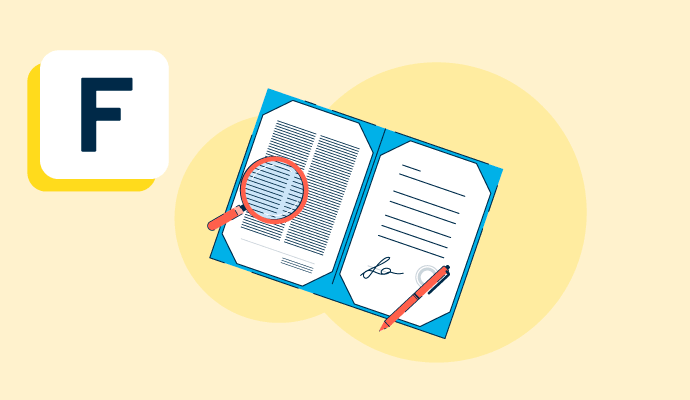What is fine print?
Fine print is text in a small font that’s less noticeable than the rest of the text in a document. Fine print is included in legal documentation, contracts, banking or credit card information, research, and medical documentation. It often details certain restrictions, limitations, or aspects of an agreement relevant to the document.
Fine print is typically similar across different industries and uses legal language, so legal document drafting software can help create accurate fine print for documents.
Software de Fine Print
Software que menciona a fine print como una característica o término.
Types of fine print
Fine print is a common legal practice and is found across many types of agreements, contracts, and methods of advertising and promotion. These types include:
-
Terms of agreement: This is a document that includes the expectations, behaviors, and rules to use, rent, own, or participate in an activity or transaction.
-
Privacy policies: These detail how a company or group will use shared information and personal data.
-
Terms of use: This is a document that outlines the rules, requirements, and restrictions for using a service or product.
-
Insurance policies: Fine print in these policies often refers to the duration of the policy, the reach of the policy, or the types of work or services funded by the policy.
-
Verbal fine print: This is the type of fine print often heard in television commercials and radio ads, where the words are spoken much faster than the rest of the content.
Fine print best practices
When adding fine print to documentation, follow these tips and best practices to ensure success.
- Include fine print that isn’t intentionally obtuse or hard to understand. Making fine print inaccessible can cause a lot of pain down the road for everyone involved.
- Don’t bury the fine print where it’s impossible to find. Just because this is common practice doesn’t mean it’s best practice. Customers have more trust in businesses that are forthcoming with their fine print.
- Double and triple-check the fine print copy before finalizing and publishing it. With legal contracts, every little mistake can be used as a loophole.
- If a customer is reading documentation in a digital format, don’t mislead them into agreeing with the terms and conditions by combining the “I Agree” button with something else more prominent, like creating an account or signing up for communications. Make it clear that they are being asked to agree to the conditions – including the fine print.
Fine print vs. boilerplate vs. copyright
The fine print is important information presented in a document in a small font, often with details like rules, restrictions, guidelines, limitations, or exceptions to the rest of the legal document.
A boilerplate is a section of copy that can be used repeatedly in different documents with little to no changes and edits. Fine print is often considered boilerplate copy.
Copyright refers to legal intellectual property that a person or business has taken ownership of and claimed exclusive rights to.






















